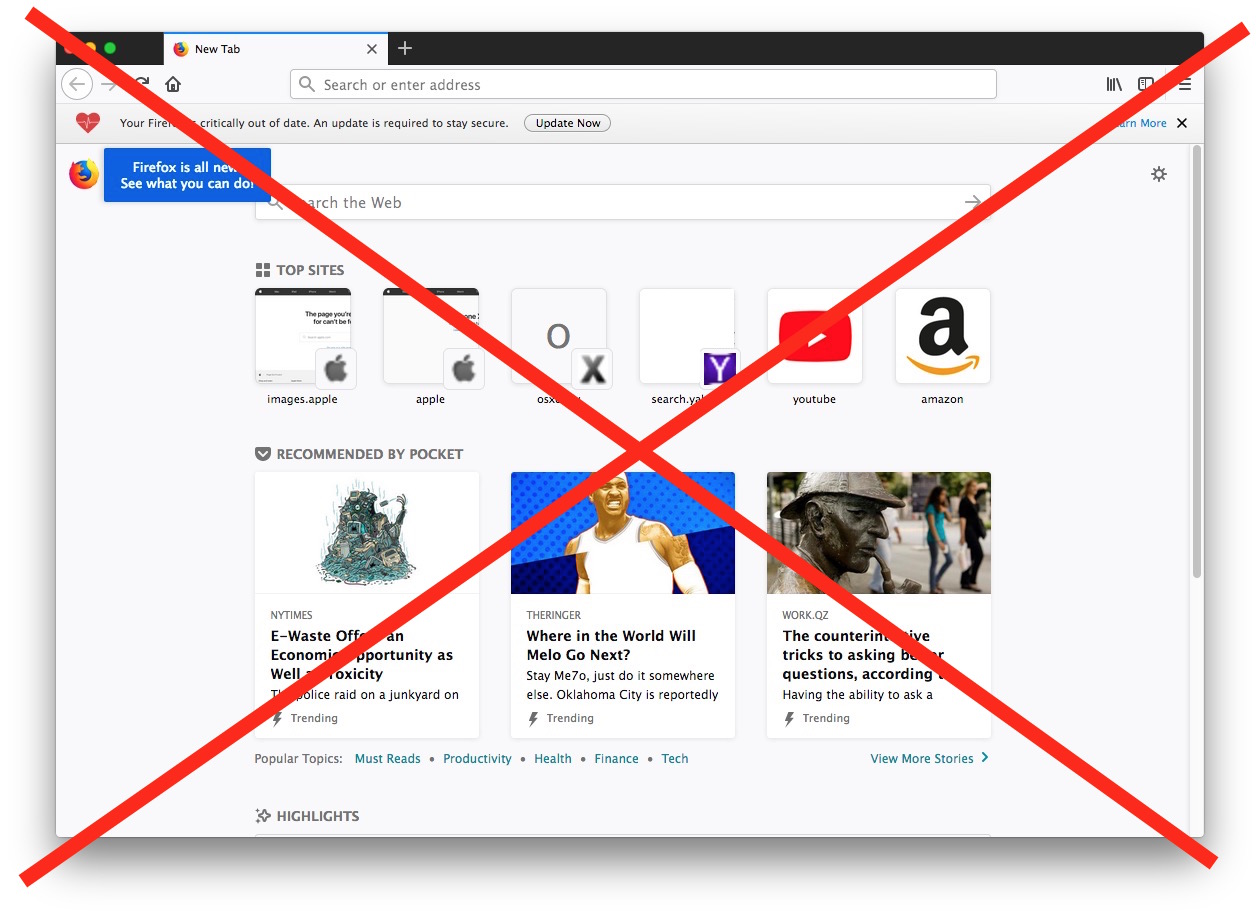Firefox Apple
Mac OS X builds for the IA-32 architecture became available via a universal binary which debuted with Firefox 1.5.0.2 in 2006. citation needed Starting with version 4.0, Firefox was released for the x64 architecture to which macOS had migrated. Firefox has improved its performance and stability with optimized JavaScript engines and rendering, greater compatibility with HTML5, independent processes for browser plug-ins, and more. This version has also improved the loading speed for sites and resource consumption to avoid excessive memory usage like previous versions. Upgrading to the new version of Firefox (84+) on Apple Silicon If you’re on a Mac computer with Apple Silicon, you will need to fully exit and restart Firefox after upgrading to Firefox 84+ in order for Firefox to run on the new architecture, which has faster performance and better battery life. Firefox supports AcroForm, which will allow you to fill in, print, and save supported PDF forms and the PDF viewer also has a new fresh look. For the recently released Apple devices built with Apple Silicon CPUs, you can use Firefox 83 and future releases without any change. Go to the Firefox menu at the top of the screen. Select Quit Firefox. When you re-open Firefox, you’ll be on the new architecture. Tip: You can also confirm that you’re using the Apple Silicon version of Firefox by entering about:support in the address bar and seeing that Rosetta Translated is showing up as false.
It's easy to install Firefox onto your iPhone, iPad or iPod. Here's how to do it.
- Open the App Store on your device and go to the Firefox for iOS page.
- Tap .
- Tap .
- Enter your Apple ID Password, then tap .
- When Firefox is finished downloading, the button will appear on its App Store page. The Firefox icon will also appear on your home screen.
Apple Silicon is the next big thing in the Apple world, and the Cupertino-based tech giant itself keeps bragging about the performance of its own custom ARM chip on every single occasion.
Firefox Apple Pay
And truth be told, the official numbers do sound interesting.

The company says the M1 chip can deliver up to 3.5 faster CPU performance than the previous generation Macs, which is something totally impressive, especially because the older Apple computers were already pretty fast.
“M1 is the first personal computer chip built using cutting-edge 5-nanometer process technology and is packed with an astounding 16 billion transistors, the most Apple has ever put into a chip. It features the world’s fastest CPU core in low-power silicon, the world’s best CPU performance per watt, the world’s fastest integrated graphics in a personal computer, and breakthrough machine learning performance with the Apple Neural Engine,” Apple said.
“As a result, M1 delivers up to 3.5x faster CPU performance, up to 6x faster GPU performance, and up to 15x faster machine learning, all while enabling battery life up to 2x longer than previous-generation Macs. With its profound increase in performance and efficiency, M1 delivers the biggest leap ever for the Mac.”
Needless to say, to benefit from the full potential of Apple Silicon users must run apps that are already optimized for the Apple chip. And this means the devs around the world are now working around the clock to prepare their software for the M1 processor.
Firefox is one of the world’s leading browsers, and naturally, it just had to run on Apple Silicon too. Version 84 is the one adding support for the M1 chip, so make sure you update to the latest version to benefit from the native experience.
But here’s what you must do in order to correctly install Firefox on Apple Silicon.
If you’re already running an older version of the browser, you can update to build 84 using the built-in update system, but then it’s mandatory to close the app and restart it to complete the browser update and switch to the Apple Silicon-optimized experience.
“If you’re on a Mac computer with Apple Silicon, you will need to fully exit and restart Firefox after upgrading to Firefox 84+ in order for Firefox to run on the new architecture, which has faster performance and better battery life,” Mozilla explains.
How to check if you’re running the Apple Silicon build of Firefox
If you’re not sure if Firefox has already received the Apple Silicon update, it’s pretty easy to tell if this happened or not right from within the browser.
First and foremost, make sure the browser is already on version 84. After this, you can open the app, and in the address bar, type the following code:


Mozilla App Download For Pc
about:supportLook for an entry called:Rosetta TranslatedIf its current setting is false, then you are running the Apple Silicon version of the browser. If this flag is set to true, then it means you’re still using the Rosetta emulation and you need to update to Firefox 84 and restart the browser to complete the switch.Firefox For Mac Download
Firefox Applescript
Needless to say, all future versions of Firefox would support Apple Silicon, so the steps above apply to all updates after Firefox 84.
In the meantime, Apple is working around the clock with developers to bring their apps to Apple Silicon, and new such updates are released every once in a while. For what it’s worth, the main alternatives to Firefox, including Google Chrome and Microsoft Edge, already come with Apple Silicon support, as both Google and Microsoft rolled out this important update in the testing channels
